If there were a fashion brand that could define the iconic style of Millennials and Gen-Z alike, it would be Abercrombie & Fitch. From its legendary Abercrombie-branded zip-up sweaters and shirtless male models, it was all the rage among the young generation from the early 2000s until 2016 because, ironically, for how iconic it stood, it was named America’s “most hated retail brand” in 2016 by the American Customer Satisfaction Index.
How could a fashion brand that stole the hearts of many young people be so hated? The simple answer is that it did not listen to its audience.
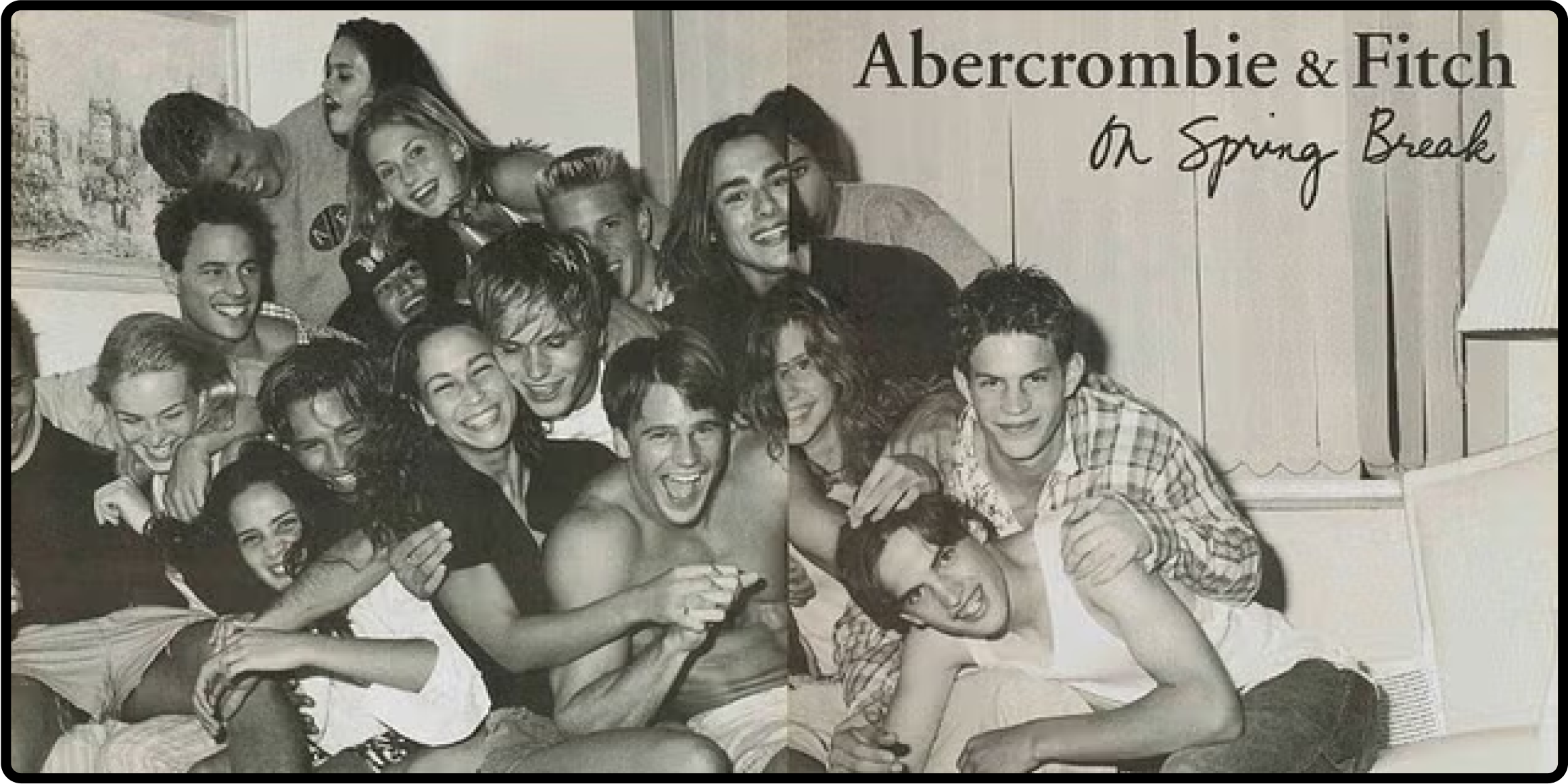
Abercrombie’s Marketing Strategy & the 4P’s
Abercrombie & Fitch climbed by 285% in 2023, a long way from their labeling in 2016. A complete rebrand became necessary for the company to welcome inclusivity and diversity.
They accepted a rebrand using the 4’Ps:
People
Undoubtedly, for those who grew up with Abercrombie, it was known as the “cool kids brand.” Previous CEO Mike Jeffries said, “A lot of people don’t belong [in our clothes], and they can’t belong.” This elitist way of marketing became extremely outdated which needed a significant change.
Rather than chasing after a new generation of young people, Gen Alpha or Gen Beta, which would introduce the hassle of rebuilding brand equity and familiarity from scratch, they chose to market to their existing customers. The generations that stood by Abercrombie and would welcome a rebrand with open arms– Millennials and Gen-Z.

Product
For the next 5 years, Abercrombie & Fitch studied their main demographic. Now that the generations who encompass their main demographic are well into their professional careers, they could transform their clothing as more “grown up.” This meant designing clothes for brunches, destination weddings, and office wear. During their half a decade of research, they also concluded that women have many issues with jeans.
Their design team began introducing blazers and suits for the office, dresses for weddings and parties, and stretchy Curve Love Jeans, which are now half of all their denim sales.
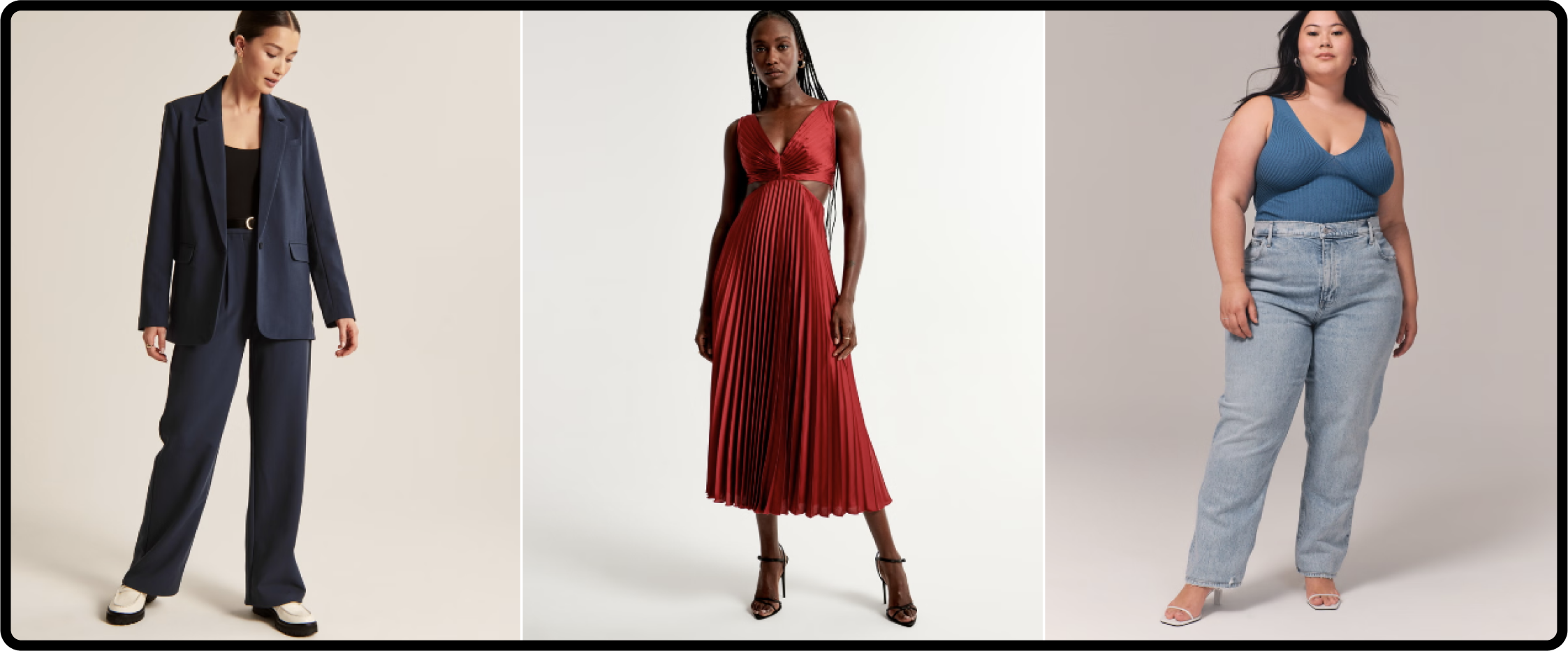
Positioning
With A&F obsessed with their customers “fitting into a certain lifestyle” back in the day, their presence and approach in the world of fashion needed a refresher. They needed to begin listening to their customers and put their needs before anything else. In this case, customers want a brand that fosters a sense of belonging. “You bring the clothes to life. We just make them,” began making taglines.
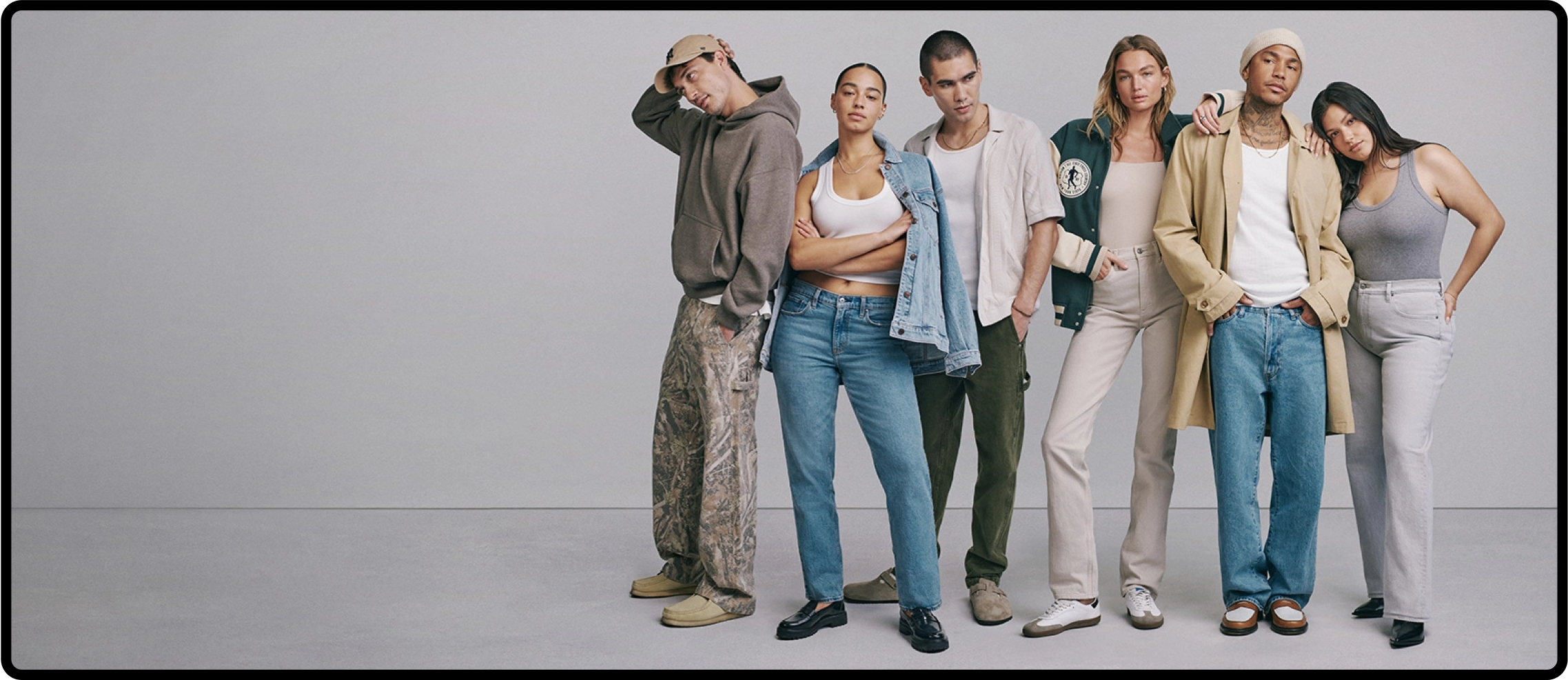
Perception
Social media has become a big win for Abercrombie and its marketing. Compared to how Abercrombie used to market previously, they are currently leaning heavily on social media and influencers on socials. What better way to spread the word on social media than finding fashion influencers with a large audience? You will not be able to find paid marketing to promote a brand’s rebrand; a more authentic way of knowing it is “simply stumbling upon it.” The best way of doing so is through trusted influencers on your feed.
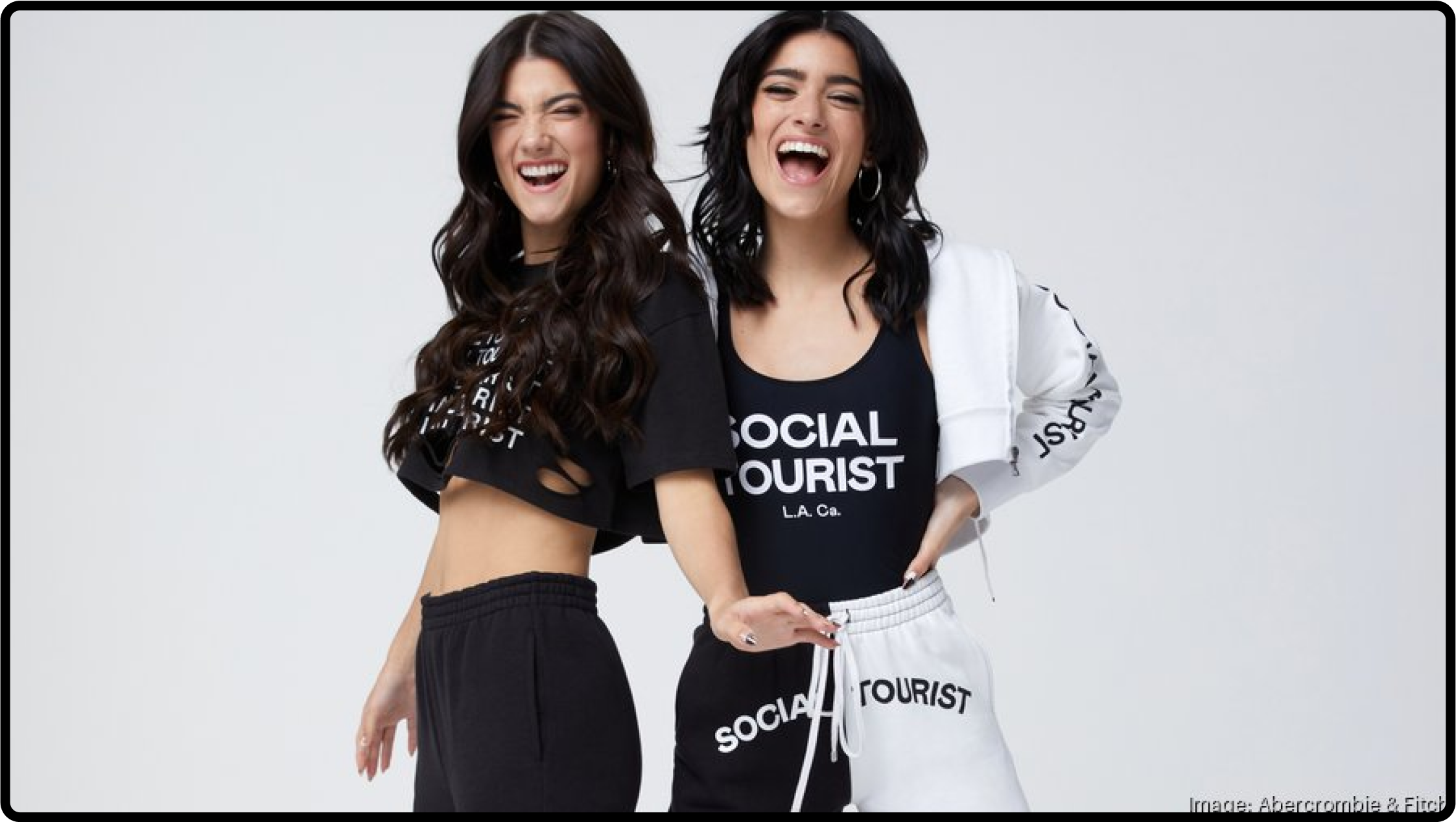
Abercrombie & the Influencer Strategy
Authenticity is the key to this rebrand. Influencers have authenticity, which resonates deeply with their followers. By leveraging influencers who genuinely align with Abercrombie’s brand values, the company can effectively reach and engage a broader audience. These influencers provide relatable and trustworthy content, making the brand more approachable and credible. Additionally, the collaboration with influencers allows Abercrombie to tap into diverse demographics and niche markets, enhancing its appeal and relevance.
After completing their four “P’s” and mastering them, Abercrombie knew to speak to their long-time fans and influence them to buy through their list of potential influencers to collaborate with. The typical Abercrombie customer ranges from the ages of 25 to 29 years old, and Abercrombie finds influencers within that age range for attraction.
Abercrombie influencers range from different social media platforms but mostly stem from TikTok and Instagram as that is all the rage with the vast majority of influencers.
Moreover, Abercrombie’s influencer collaborations go beyond demographic alignment, strategically choosing influencers whose personal styles and values align closely with the brand’s ethos of casual luxury and inclusivity. By featuring these influencers in campaigns and collaborations, Abercrombie not only showcases its products in authentic, real-life contexts but also leverages the influencers’ engaged followings to drive brand awareness and affinity.
This approach not only helps Abercrombie stay relevant but also positions them as a brand that listens to and values the voices of its community. As social media continues to evolve, Abercrombie’s proactive engagement with influencers ensures that they remain at the forefront of fashion trends while maintaining a strong connection with their loyal customer base and attracting new followers seeking authenticity and style.
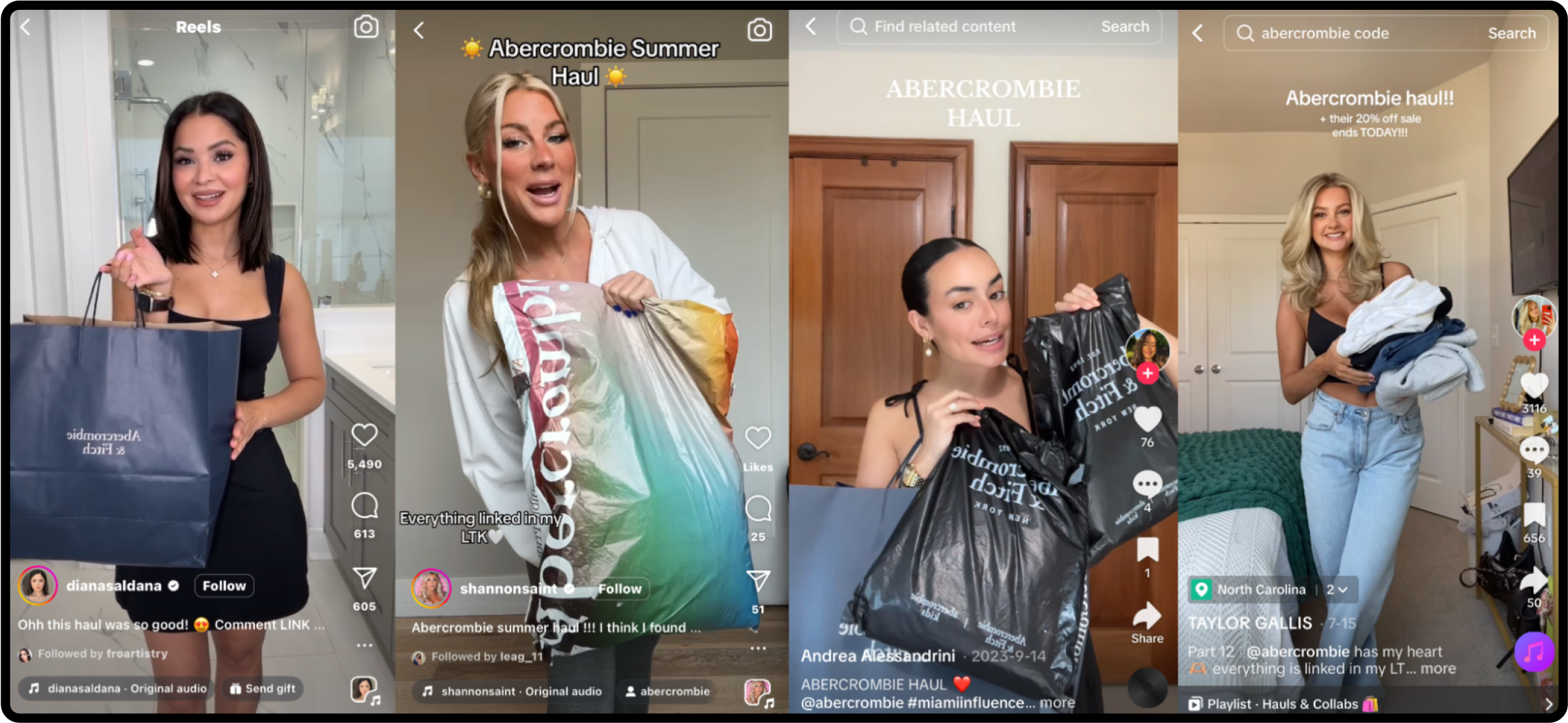
Abercrombie & Fitch’s journey through rebranding symbolizes a remarkable transformation driven by listening to their audience and embracing authenticity. From their controversial past to its current revival, the brand has navigated challenges with a renewed focus on inclusivity, diversity, and customer-centricity.
By meticulously reevaluating its “4 P’s” strategy—people, product, positioning, and perception—Abercrombie has not only restored their image but also redefined their place in the fashion industry. Through their leveraging of influencer partnerships and modern marketing strategies, Abercrombie reconnected with its core demographic of Millennials and Gen Z shoppers. The strategic use of influencer collaborations, particularly on platforms like TikTok and Instagram, has been the key to reaching and resonating with its target demographic, which is necessary for creating an authentic brand identity.
Abercrombie’s relevance in fashion today is far different from that of 2016. It has come a long way from being the “most hated retail brand,” and Abercrombie will continue to succeed in its evolution for the masses. They have changed their branding to a brand that listens and adapts to the voices of their community.
As Abercrombie continues to evolve, they remain committed to upholding its legacy of casual luxury while embracing the evolving preferences and values of its loyal customer base as they grow older. In doing so, Abercrombie & Fitch will set the standard for authenticity and customer engagement in the retail world. Now, one thing remains clear: Abercrombie & Fitch is not just about clothing; it’s about fostering a sense of belonging and style that resonates authentically with its audience.






